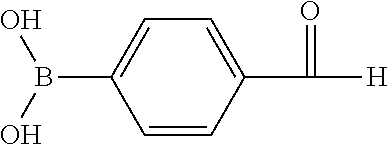Polypeptides
a polypeptide and polypeptide technology, applied in the field of new, can solve the problems of difficult to remove bad odor (malodor), and difficult to remove soil by commercially available detergent compositions, so as to improve wash performance, improve wash performance, and increase wash performance
- Summary
- Abstract
- Description
- Claims
- Application Information
AI Technical Summary
Benefits of technology
Problems solved by technology
Method used
Image
Examples
example 1
Cloning and Expression of Bacterial DNases
[0693]The DNases were derived from bacterial strains isolated from environmental samples by standard microbiological isolation techniques or by metagenomic sequencing of DNA isolated from environmental samples. Pure strains were identified and taxonomy was assigned based on DNA sequencing of the 16S ribosomal genes (Table 1).
TABLE 1OrganismSource CountrySEQ ID:Paenibacillus sp-62212Sweden1Paenibacillus sp-62605Sweden2Bacillus sp-62738Denmark3Bacillus pumilusUnited states4Bacillus horikoshiiJapan5Bacillus sp-62490United states6Bacillus sp-13390Greece7Jeotgalibacillus sp-13376Canada8Bacillus sp-62738Denmark9Streptomyces iakyrusJamaica10Streptococcus infantisSweden11Bacillus sp-62599Sweden12Bacillus akibaiGreece13Paenibacillus xylanexedensDenmark14Fictibacillus sp-62719United states15Bacillus algicolaDenmark16Exiguobacterium sp. NG55United states17Metagenome from environmental sample JUnited states18Streptomyces thermoalcalitolerans (D5M41741)I...
example 2
MiniLOM Liquid Detergent
Isolating Laundry Specific Bacterial Strains
[0697]One strain of Brevundimonas sp. isolated from laundry was used in the present example. The Brevundimonas sp. was isolated during a study, where the bacterial diversity in laundry after washing at 15, 40 and 60° C., respectively, was investigated. The study was conducted on laundry collected from Danish households. For each wash, 20 g of laundry items (tea towel, towel, dish cloth, bib, T-shirt armpit, T-shirt collar, socks) in the range 4:3:2:2:1:1:1 was used. Washing was performed in a Laundr-O-Meter (LOM) at 15, 40 or 60° C. For washing at 15 and 40° C., Ariel Sensitive White & Color was used, whereas WFK IEC-A* model detergent was used for washing at 60° C. Ariel Sensitive White & Color was prepared by weighing out 5.1 g and adding tap water up to 1000 ml followed by stirring for 5 minutes. WFK IEC-A* model detergent (which is available from WFK Testgewebe GmbH) was prepared by weighing out 5 g and adding t...
PUM
| Property | Measurement | Unit |
|---|---|---|
| temperature | aaaaa | aaaaa |
| temperature | aaaaa | aaaaa |
| temperature | aaaaa | aaaaa |
Abstract
Description
Claims
Application Information
 Login to View More
Login to View More - R&D
- Intellectual Property
- Life Sciences
- Materials
- Tech Scout
- Unparalleled Data Quality
- Higher Quality Content
- 60% Fewer Hallucinations
Browse by: Latest US Patents, China's latest patents, Technical Efficacy Thesaurus, Application Domain, Technology Topic, Popular Technical Reports.
© 2025 PatSnap. All rights reserved.Legal|Privacy policy|Modern Slavery Act Transparency Statement|Sitemap|About US| Contact US: help@patsnap.com


